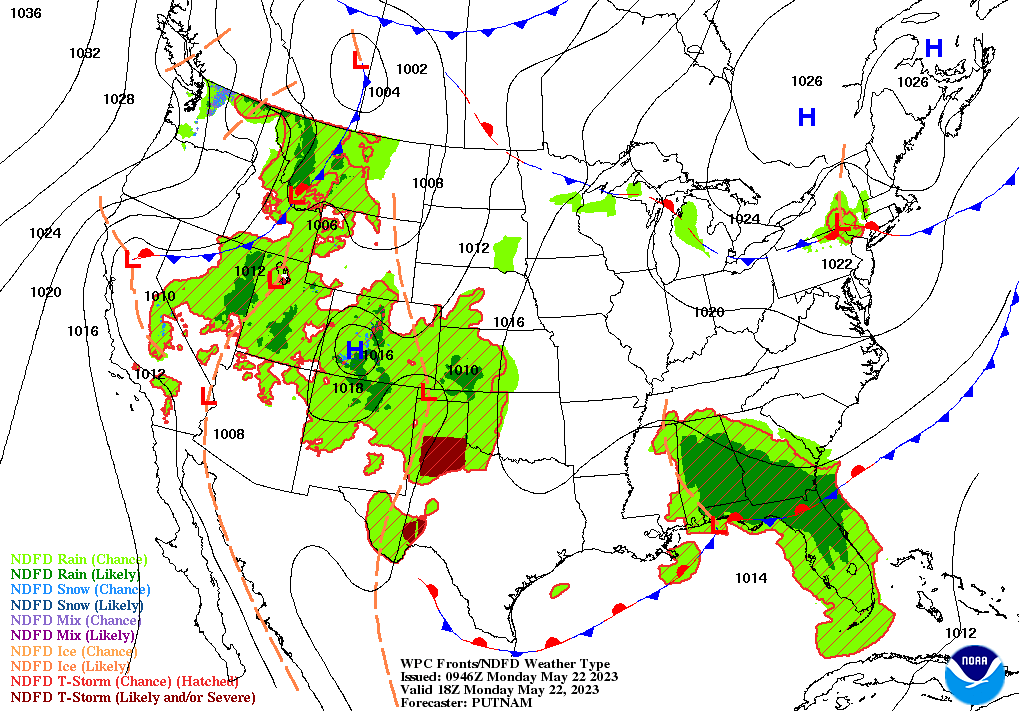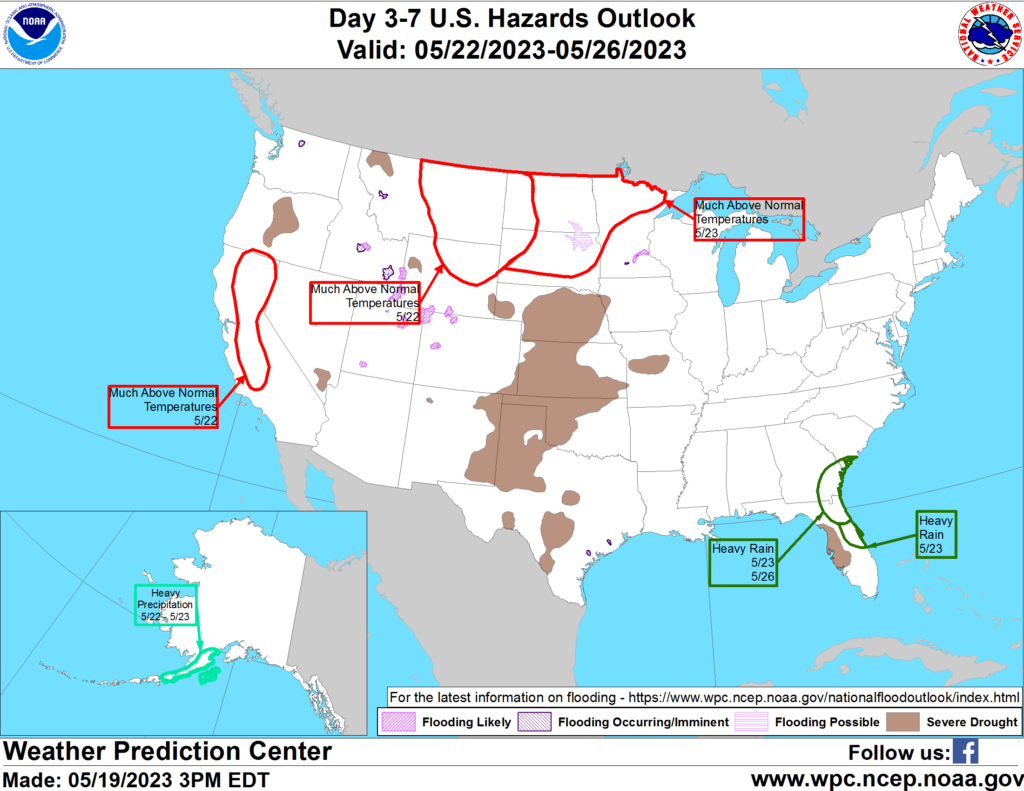Weather
Very favorable, late-spring fieldwork weather covers much of the Heartland

Across the Corn Belt, warm, dry weather favors fieldwork, including corn and soybean planting, as well as winter wheat development and summer crop emergence and growth. However, smoke from Canadian wildfires continues to drift southward, mainly in the upper levels of the atmosphere, contributing to hazy, filtered sunshine.

On the Plains, widely scattered showers are occurring from Kansas southward. Recent and ongoing showers across the central and southern Plains have generally arrived too late for winter wheat but are locally benefiting rangeland, pastures, and summer crops. Meanwhile on the northern Plains, warm, dry weather favors fieldwork and crop development, although smoke from Canadian wildfires is resulting in hazy conditions and some reductions in air quality.

In the South, mostly cloudy, humid weather accompanies scattered showers. Early Monday, some of the most significant rain is falling in the Southeast, including parts of Alabama, Georgia, and northern Florida. Although the rain is limiting fieldwork, conditions remain mostly favorable for summer crop development.

In the West, cooler air is arriving in the Pacific Northwest, following a cold front’s passage. The front, currently crossing the northern Rockies, is generating spotty showers. Above-normal temperatures cover much of the remainder of the region, with Monday’s high temperatures expected to top 100°F in parts of the Desert Southwest. The Western warmth is contributing to significant snow-melt runoff, which has resulted in the highest water level since January 1997 along the East Walker River near Mason, Nevada.

Add Comment